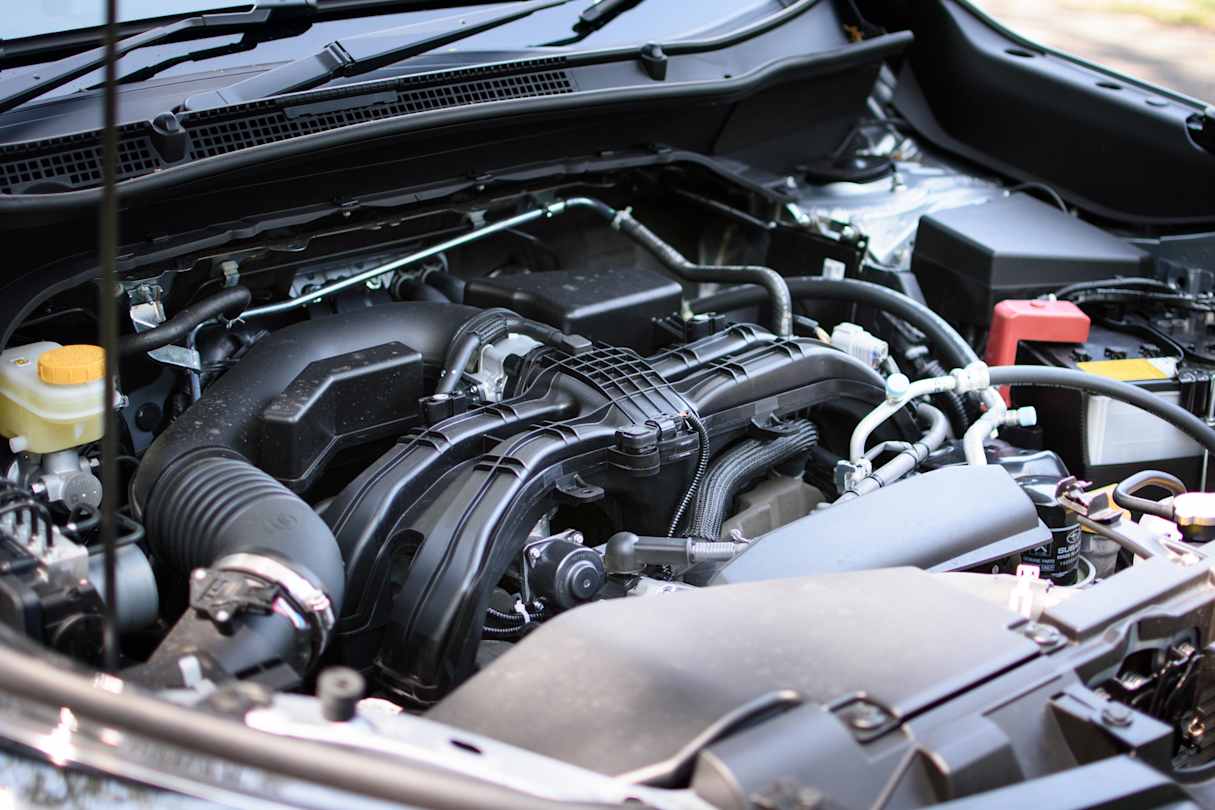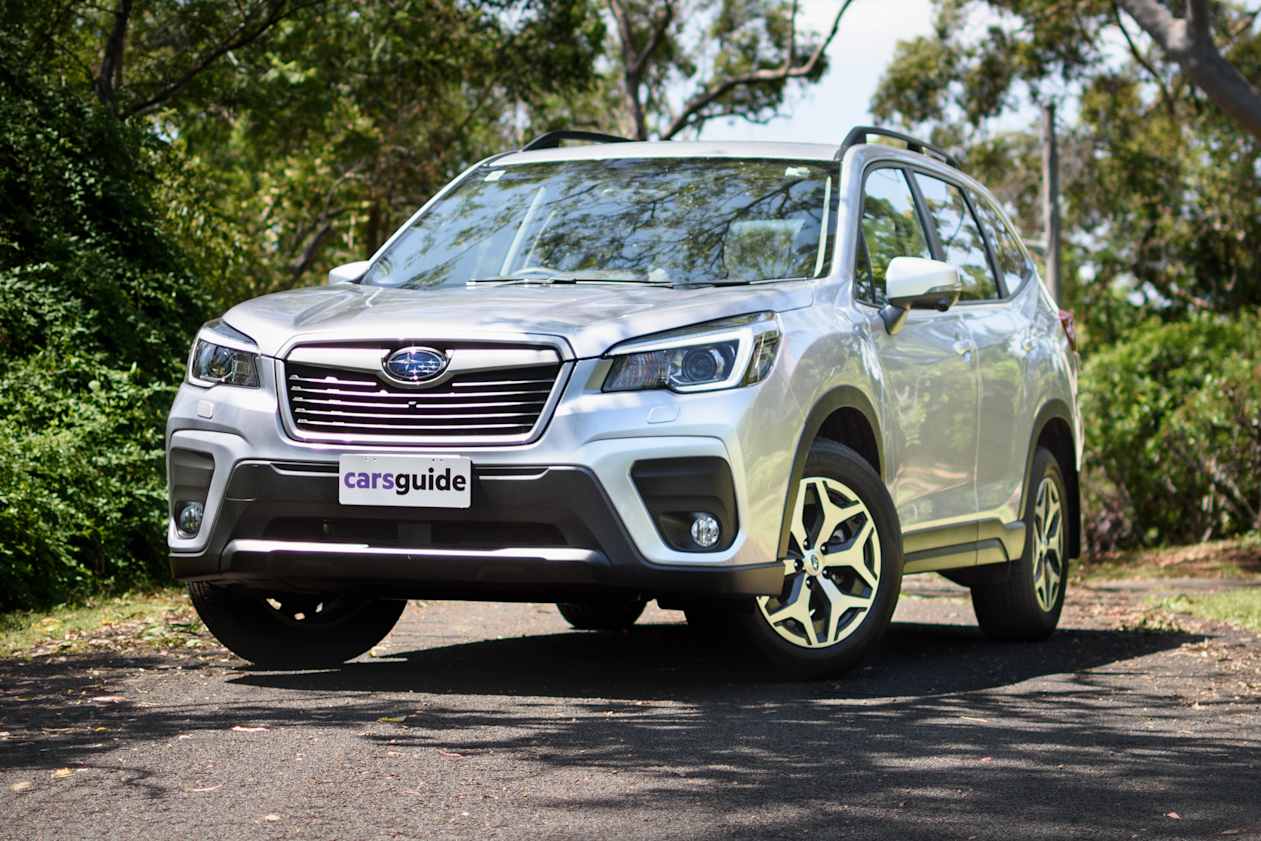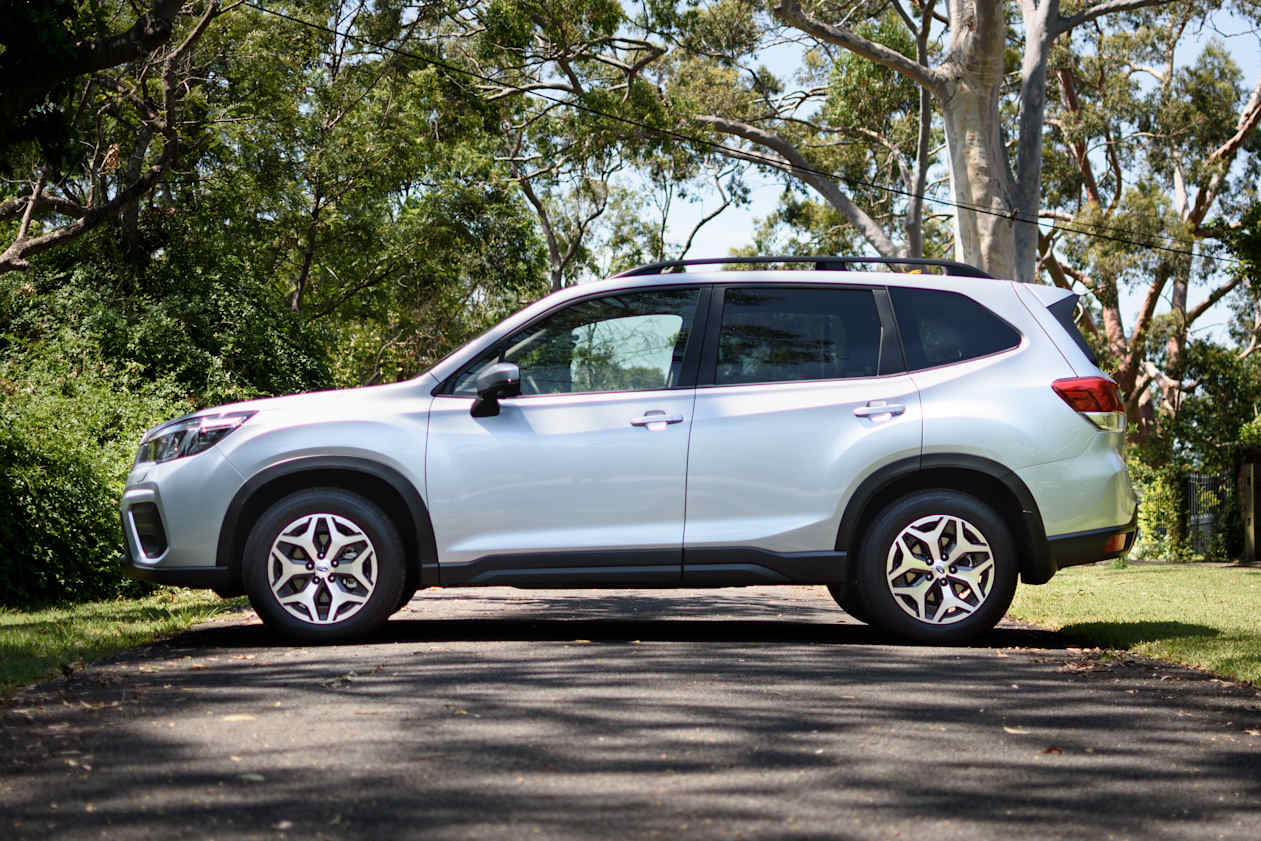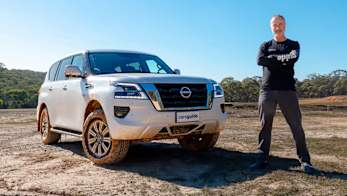I’m not sure I can name another car that carries the same sort of multi-generational appeal that the Subaru Forester seems to have.
It does great job at marketing itself in Australia. Not as dorky as a traditional SUV, not as limiting as a hatchback, and with some ability to deal with the rough Aussie road conditions, it has always managed to appeal to young and old alike.
In this latest iteration, the Forester is bigger than ever, with a back-to-basics four-variant lineup and a strong focus on safety.
Is that the right bet for the Forester badge? And what does the 2.5i-L have that the well-equipped 2.5i base model doesn’t? I spent a week in one to find out.
Subaru Forester 2019: 2.5I-L (awd)
| Engine Type | Inline 4, 2.5L |
|---|---|
| Fuel Type | Unleaded Petrol |
| Fuel Efficiency | 7.4L/100km (combined) |
| Seating | 5 |
| Price From | $22,880 - $28,270 |
| Safety Rating |
|
Does it represent good value for the price? What features does it come with?
8 / 10
On the face of it, the $35,490 2.5i-L is a hard sell. There is, quite literally, no visual distinction between this car and the base-model 2.5i which sits below it.
No bespoke wheels, no little bits of chrome trim, no differing materials on the inside - there isn’t even a bigger media screen. Don’t believe me? Go and look at my recent review of the 2.5i and try to find a difference (I’ll save you some time; you can’t).
It isn’t helped by the fact that the base-model Forester (at $33,490) is already amazing value, featuring highlights like LED headlights, a leather-bound steering wheel and Subaru’s very good ‘EyeSight’ safety suite (more on that in the safety section).
So, what’s left for the 2.5i-L to add? It costs $2000 more than the base and adds driver attention alert (DAA) to the safety offering, alongside a side-view monitor (so you don’t smack your wheels in the gutter), a front-view monitor (like a reversing camera, but for going forward…), auto high-beam control and reverse auto emergency braking (AEB).
The 2.5i-L also enables memory functions on the climate control, driver instrument panel and dash display, which seems like arbitrary punishment for base-model buyers. Surely it doesn’t cost Subaru too much more for these features to have memory function…
The additional safety and memory features are nice, but they’re hardly a deal breaker either way, making the 2.5L an arguably forgettable variant. The 2.5i Premium sits above gets a significant swathe of stylistic and feature upgrades and will certainly have more presence on a dealer lot.
Despite that, and thanks to the features available from the base up, the $35,490 2.5i-L still compares well to rivals like the Mazda CX-5 Maxx Sport ($37,870), Honda CR-V VTi-S AWD ($35,490) and the Nissan X-Trail TS AWD ($35,990).
Is there anything interesting about its design?
7 / 10
The Forester is not going to make any enemies. The new generation’s design is one of gradual refinement rather than stylistic evolution.
It looks more SUV-like than ever before, growing in every dimension, yet it still keeps a smidge of its wagon roots in its side-profile – an essential piece of Forester DNA.
As previously mentioned, the 2.5i-L is a bit of a visual let down, when you consider it looks identical to the base grade. Subaru could have at least thrown in a different alloy design, or some chrome trimmings about the place, but to be fair, doing so would have added dollars to this variant’s price.
The interior is exactly the same as the base grade, too. It’s not necessarily a bad thing. There are the same comfortable seats with hard-wearing cloth trim, a few leather touch points in the right places and the signature chunky Subaru steering wheel.
The dash design is fussy. There’s a small (6.5-inch) media screen, another screen perched atop the dash and yet another screen embedded between the dial clusters. It’s one too many places to look. A larger media screen comprising the features of the two centre-stack screens would have been a more sensible solution.
The centre stack also juts out into the passenger compartment with all its square angles. The Forester is definitely more angular than it is elegant inside and out.
The steering wheel is busy as well, now with fourteen buttons and two toggles. Credit is due for its chunky leather-bound finish, giving the helm a suitable feel for such a boxy car.
How practical is the space inside?
8 / 10
It’s difficult to fault the Forester here. The nameplate has always been a practical one, but its newfound dimensions give it leagues of room in every department.
A 30mm boost to the wheelbase, for example, makes for awesome legroom in the second row even amongst its SUV peers.
The second row also features two power outlets and two vents as well as big cupholders, a drop down armrest, two-tiered pockets on the back of the front seats and the same soft-touch surfaces as front passengers on the door trim.
Front occupants are treated to a large and airy space courtesy of the Forester’s huge windows with plenty of arm room, soft-touch surfaces on the door and centre console, and easy-to-use dial-based climate and volume controls.
Those same huge windows grant excellent visibility. I’m not sure if you can objectively measure the concept of ‘visibility’ to some metric value. If you could, I’m certain the Forester would edge out its competition.
There are also large cupholders in the centre console and doors, and a storage trench hosting a 12v outlet and primary USB port in front of the shift-lever.
The Forester’s upright frame grants ridiculous amounts of headroom, no matter where you’re sitting.
The Forester offers 498 litres of space, but it's still edged out by the RAV4 and CR-V.
On the downside, there are screens all over the place and there are buttons everywhere. It’s also fiddly to control all the functions linked to ambiguously labelled steering wheel buttons. Despite having driven several Subarus in the past couple of months, I still had to re-learn what they all do.
The boot offers leagues of room even in its least-generous configuration. With the seats up and the cargo cover on, the Forester offers 498 litres of space. It’s edged out in this segment by the even taller Toyota RAV4 (552L) and Honda CR-V (522L), but that’s about it. The Subaru’s 1768L capacity with the seats down is massive, too.
You can tow 750kg unbraked or 1500kg braked with any Forester variant.
What are the key stats for the engine and transmission?
7 / 10
All Forester variants are now powered by a 2.5-litre, four-cylinder petrol ‘boxer’ engine. The 2.0-litre base engine and diesel version are now extinct, along with the option of a manual transmission.
Thankfully, the 2.5-litre – which Subaru says is 90 per cent new – is very good.

It produces an on-par 136kW/239Nm mated to Subaru’s symmetrical all-wheel-drive system via a continuously variable transmission (CVT). Despite the lack of a turbocharger it manages to feel punchy and responsive.
How much fuel does it consume?
7 / 10
After my week of mixed freeway and suburban driving I landed on a fuel consumption figure of 9.0L/100km. This was interesting, as on my test of the base-model 2.5i in late 2018, I landed on the exact same consumption figure. So count that number as reliable.
The official combined claim for the Forester is 7.4L/100km, so a miss of 1.6L/100km is not so bad, particularly since the 2.5i-L weighs in at a 1525kg (Tare).
All Foresters drink regular 91RON unleaded petrol and have 63-litre fuel tanks.
What's it like to drive?
8 / 10
Driving the Forester is easy. So easy.
It has awesome visibility, thanks to the tall roofline and large windows, and the extra camera suite on the 2.5i-L makes parking such a big unit a cinch.
The steering is light and the 2.5-litre engine is instantly responsive and reasonably effortless throughout the rev range. It can be a tad thrashy when pushed, but it also gives the big Forester a light and playful feel that was largely unexpected.
The long-travel suspension and all-wheel drive calibration give it a distinctly different feel.
Engine and road noise are both distant, although the stereo system is a bit tinny compared to the premium one that appears in higher grades.
The long-travel suspension and nature of the Forester’s boxer engine and always-on all-wheel drive give it a distinctly different feel to many competitors, which can feel like giant front-drive hatchbacks. It’s certainly a more spongey, comfort-focused drive compared to something like the CX-5, which is stiff and sporty.
Yes, CVT transmissions are often derided, but Subaru’s execution of the technology is relatively intuitive. Forester fans of days past will miss the manual, though.
The drive will hardly win anyone over who wasn't a fan of the previous Forester, but the 2.5i-L is still a safe and easy-going car
On the freeway, this Forester may as well drive itself with its active cruise control. Its one of the more proactive active systems on the market, backing off without needing to be prompted and always maintaining a safe distance from the car in front. It even has a monitor letting you know whether its locked on to the next vehicle, and a status monitor for distance and lane keeping.
The drive experience will hardly be winning anyone over who wasn't a fan of the previous Forester, but the 2.5i-L’s safe, easy-going and surprisingly entertaining nature is Subaru in its element.
Warranty & Safety Rating
What safety equipment is fitted? What safety rating?
9 / 10
The Forester's safety offering is comprehensive, especially at this price.
Included on the 2.5i-L is auto emergency braking (AEB) with brake light detection, lane departure warning (LDW) with lane keep assist (LKAS), driver attention alert (DAA), blind spot monitoring (BSM), and active cruise control.
Joining the regular suite of stability controls is torque vectoring and pre-collision throttle management.
While the ‘EyeSight’ safety suite is seriously impressive, when you’re behind the wheel for a casual drive, it can border on frustrating.
The system will chastise you for everything. Beeps for taking your eyes off the road (to look at one of the many screens…) beeps for even thinking about going out of your lane, and beeps even more enthusiastically to warn you a collision may be imminent, even though about 90 per cent of the time it isn’t.
I’m glad that other Forester drivers will be policed so thoroughly, but I’ve driven Mazdas with equivalent safety suites that are far less annoying.
On the passive side, the Forester has seven airbags, dual ISOFIX child-seat mounting points on the outer two rear seats and top-tether mounts on all three rear seats.
This generation of Forester is not yet rated by ANCAP.
What does it cost to own? What warranty is offered?
7 / 10
I’m pleased to report that after consistently copping flak over the past few years in the ownership segment, Subaru has finally upped its warranty from three to five years, and with unlimited kilometres.
Now that Toyota has also joined the five-year warranty bandwagon, Nissan’s X-Trail is the Forester’s only main rival with a three-year promise.
The Forester requires servicing once every 12 months or 12,500km and service pricing is capped, costing between $346.39 and $760.11 per service. It averages out to $477.67 per year for the life of the warranty.
Verdict
Despite not adding any extra aesthetic appeal to the Forester range, the 2.5i-L is still great value, piling on even more safety at its modest price.
While that might make it a hard sell on dealer lots compared to the more bells-and-whistles 2.5i Premium above it, most competitors can’t or won’t offer such a comprehensive safety suite and all-wheel drive for the same money.
Combine that with a solid serving of unique Subaru appeal, and you’ve got a genuinely interesting alternative to the regular SUV crowd.
Does the Subaru Forester 2.5i-L do enough to stand out in the crowded SUV market? Tell us in the comments below.
Pricing Guides





































.jpg)
.jpg)








.png)








.jpg)
.jpg)

.jpg)

.jpg)
